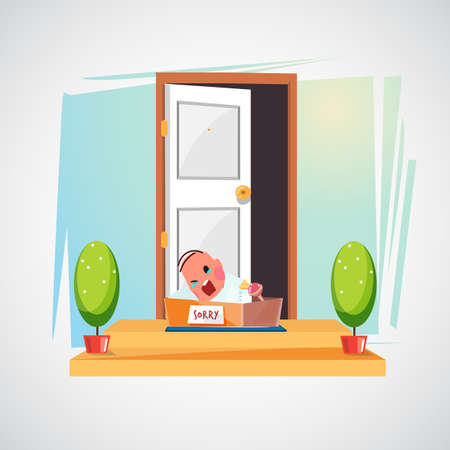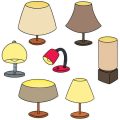Choosing the Right Space
Setting up a home office starts with selecting the perfect location. The right space can make a huge difference in your productivity and overall comfort. Here are some key factors to consider when choosing the ideal spot for your workspace.
Natural Light
Good lighting is essential for maintaining focus and reducing eye strain. A home office with plenty of natural light can improve mood and energy levels. If possible, choose a space near a window to take advantage of daylight. If natural light is limited, invest in high-quality artificial lighting that mimics daylight.
Noise Levels
The level of noise in your home office can significantly impact concentration. A quiet environment helps with deep focus, especially if you have frequent virtual meetings or tasks requiring attention to detail. If youre setting up your office in a shared living space, consider using noise-canceling headphones or adding soft furnishings like rugs and curtains to absorb sound.
Available Space
Your home office should be spacious enough to accommodate your desk, chair, and any necessary equipment while still allowing you to move comfortably. Even if you have limited space, creative solutions like wall-mounted desks or multi-purpose furniture can help maximize functionality.
Comparison of Different Home Office Locations
| Location | Pros | Cons |
|---|---|---|
| Spare Room | Quiet, private, dedicated workspace | Might require repurposing an existing room |
| Living Room Corner | Easily accessible, uses available space efficiently | Potential distractions from household activities |
| Bedroom | Avoids common areas, can be customized for comfort | Might blur work-life boundaries |
| Basement or Attic | Secluded, minimal distractions | Might need additional lighting and climate control |
2. Designing for Productivity
Creating a home office that promotes productivity starts with thoughtful design choices. By incorporating ergonomic furniture, effective lighting, and a clutter-free layout, you can build a workspace that helps you stay focused and efficient throughout the day.
Ergonomic Furniture: Comfort Meets Functionality
Investing in ergonomic furniture is essential for both comfort and long-term health. A well-designed chair and desk setup can prevent strain and fatigue, allowing you to work more efficiently.
| Furniture | Key Benefits |
|---|---|
| Ergonomic Chair | Supports posture, reduces back pain, and enhances comfort during long hours. |
| Adjustable Desk | Allows sitting or standing options to reduce fatigue and improve circulation. |
| Monitor Stand | Keeps the screen at eye level to prevent neck strain. |
| Keyboard & Mouse Placement | Encourages natural wrist positioning to avoid strain. |
Effective Lighting: Boosting Focus and Reducing Eye Strain
A well-lit workspace can make all the difference in maintaining focus and reducing eye fatigue. Consider layering different light sources to create an optimal working environment.
- Naturally Lit Spaces: Position your desk near a window to take advantage of natural light, which helps reduce eye strain and improves mood.
- Task Lighting: Use an adjustable desk lamp with warm white LED bulbs to provide direct lighting for reading and screen work.
- Ambient Lighting: Incorporate soft overhead or wall lighting to balance brightness in the room and minimize harsh shadows.
A Clutter-Free Layout: Enhancing Organization and Efficiency
A clutter-free workspace promotes mental clarity and efficiency. Keeping your office organized will help reduce distractions and improve workflow.
Tips for Maintaining an Organized Space:
- Cable Management: Use cable organizers or clips to keep wires neatly arranged.
- Shelving & Storage: Install shelves or storage bins to keep supplies within reach but out of sight.
- Minimalist Desk Setup: Keep only essential items on your desk to maintain a clean workspace.
- Daily Clean-Up Routine: Spend a few minutes each day tidying up to prevent clutter from piling up.
A well-designed home office should support both comfort and productivity. By choosing ergonomic furniture, optimizing lighting, and maintaining an organized layout, you’ll create a workspace that keeps you motivated and efficient every day.

3. Infusing Personal Style
Your home office should be a reflection of your personality and taste. By carefully selecting colors, décor, and accessories that inspire creativity and motivation, you can create a space that feels uniquely yours while still being functional.
Choosing the Right Colors
Colors have a significant impact on mood and productivity. Consider these options when selecting a color scheme for your home office:
| Color | Effect |
|---|---|
| Blue | Promotes focus and calmness, ideal for high-concentration tasks. |
| Green | Eases eye strain and provides a refreshing, balanced feel. |
| Yellow | Energizing and uplifting, great for sparking creativity. |
| Neutral Tones | Create a sophisticated, distraction-free environment. |
Selecting Décor That Inspires You
The right décor elements can enhance your workspace without making it feel cluttered. Here are some ideas to personalize your office:
- Wall Art: Hang inspirational quotes, artwork, or personal photos that bring joy and motivation.
- Shelving & Storage: Use stylish shelves to display books, plants, or decorative pieces that reflect your interests.
- Aesthetic Desk Accessories: Opt for coordinated organizers, pen holders, and desk lamps that match your style.
- Cushions & Rugs: Introduce textures and patterns to make the space more inviting and comfortable.
Add Meaningful Accessories
The small details matter when it comes to making a space feel like your own. Consider adding:
- A vision board with goals and inspirations.
- A favorite scented candle or essential oil diffuser to set the mood.
- A personalized coffee mug or water bottle to keep you refreshed throughout the day.
- A comfortable chair cushion or throw blanket for added coziness.
Create a Space That Feels Like You
Your home office should be an extension of your personality. Whether you prefer a sleek modern look or a cozy eclectic vibe, choose elements that make you feel inspired and productive every time you step into the room.
4. Optimizing Storage Solutions
A well-organized home office can significantly boost productivity and creativity. Having the right storage solutions helps keep your workspace clutter-free and efficient. By incorporating smart storage options such as shelving, filing systems, and multi-functional furniture, you can create a tidy and functional environment that supports your workflow.
Smart Shelving for Easy Access
Shelving is an excellent way to maximize vertical space while keeping essential items within reach. Consider different types of shelving based on your needs:
| Shelving Type | Best For | Advantages |
|---|---|---|
| Wall-mounted shelves | Books, decor, small office supplies | Saves floor space and keeps essentials visible |
| Floating shelves | Minimalist setups, decorative elements | Adds a modern touch while providing functionality |
| Adjustable shelves | Diverse storage needs | Easily customizable for changing requirements |
| Cubby storage units | Baskets, bins, assorted office items | Keeps things organized while maintaining a clean look |
The Importance of a Filing System
An effective filing system prevents paperwork from piling up and makes it easy to locate important documents. Choose a system that suits your workflow:
- Labeled File Folders: Categorize documents by project, client, or priority level.
- Filing Cabinets: Ideal for storing official records and confidential files securely.
- D igital Filing: Use cloud storage or external hard drives to minimize physical paperwork.
- Mailed Document Bins: Organize incoming and outgoing mail to prevent desk clutter.
Multi-Functional Furniture for Efficiency
If you have limited space, investing in multi-functional furniture can help maximize both storage and usability. Here are some great options:
- Lifting Desk with Storage: Provides a workspace with built-in compartments for supplies.
- Sofa Bed or Foldable Chair: Converts your home office into a guest room when needed.
- Coffee Table with Hidden Storage: Stores books, cables, or other office essentials discreetly.
- A Desk with Built-in Shelves: Keeps frequently used items accessible without extra furniture.
Tips for Keeping Your Workspace Organized
No matter how great your storage solutions are, maintaining an organized space requires consistency. Try these simple strategies:
- Purge Unnecessary Items: Regularly declutter to avoid accumulating unnecessary papers and supplies.
- Create a Dedicated Space for Everything: Assign specific places for office supplies to make tidying up easier.
- Cord Management Solutions: Use cable organizers or clips to keep wires neat and tangle-free.
- Simplify Your Setup: Keep only what you use daily on your desk to maintain a clean workspace.
A well-thought-out storage system not only enhances efficiency but also contributes to a more inspiring work environment. By incorporating smart shelving, proper filing systems, and multi-functional furniture, you can create a home office that is both practical and aesthetically pleasing.
5. Incorporating Technology and Connectivity
Creating an efficient home office goes beyond furniture and decor—technology plays a crucial role in maintaining productivity. Ensuring a seamless workflow requires integrating high-speed internet, cable management solutions, and ergonomic tech setups to support daily tasks.
Optimizing Internet Speed and Connectivity
Reliable internet is the backbone of any home office. Slow connections can disrupt video calls, hinder file uploads, and decrease efficiency. Consider these steps to enhance your connectivity:
- Upgrade Your Plan: Choose an internet package with sufficient speed to handle video conferencing, cloud storage, and multiple devices.
- Use a Wired Connection: Ethernet cables provide more stable and faster speeds than Wi-Fi, reducing lag during virtual meetings.
- Add a Wi-Fi Extender: If your home office is far from the router, a Wi-Fi extender can improve signal strength and reliability.
- Invest in a Mesh Network: For larger homes or shared spaces, a mesh network system ensures consistent connectivity throughout.
Cable Management for a Clutter-Free Workspace
Tangled cables not only create visual clutter but also pose safety risks. Keeping cords organized improves both aesthetics and functionality. Here are some cable management solutions:
| Solution | Description |
|---|---|
| Cable Clips | Attach to desks or walls to keep cords in place and prevent tangling. |
| Cable Sleeves | Bunch multiple wires together into a single sleeve for a cleaner look. |
| Under-Desk Cable Trays | A great way to hide power strips and excess cables under your desk. |
| Cord Labels | Easily identify different cables for quick access when needed. |
Selecting Ergonomic Tech Setups
An ergonomic workspace reduces strain on your body while improving efficiency. Consider incorporating these tech accessories:
- Adjustable Monitor Stand: Keeps your screen at eye level to reduce neck strain.
- Ergonomic Keyboard & Mouse: Designed to minimize wrist discomfort during long hours of work.
- Laptop Stand & External Keyboard: Elevates your laptop to a proper height while allowing for better typing posture.
- No-Glare Screen Filters: Helps reduce eye strain from prolonged screen exposure.
Simplifying Your Workflow with Smart Devices
The right smart gadgets can enhance productivity by automating tasks and improving convenience. Some useful additions include:
- Smart Plugs & Power Strips: Control devices remotely or set schedules to save energy.
- Noiseless Mechanical Keyboard: Provides comfort without distracting clicking sounds during meetings.
- Dimmable Desk Lamp with USB Ports: Offers adjustable lighting while charging your devices conveniently.
- A Smart Speaker or Assistant: Helps manage schedules, set reminders, and play background music for focus.
The Bottom Line on Tech Integration
A well-connected home office boosts productivity while maintaining organization and comfort. By investing in high-speed internet, managing cables efficiently, using ergonomic tools, and leveraging smart technology, you can create a workspace that supports your daily tasks effortlessly.
6. Creating a Balanced Atmosphere
Designing a home office that feels both comfortable and efficient requires a well-balanced atmosphere. A space that promotes focus while also supporting relaxation can help you maintain productivity and well-being throughout your workday. By incorporating elements such as indoor plants, proper lighting, and designated relaxation areas, you can create an inviting workspace that enhances both your mood and efficiency.
Enhancing Your Space with Indoor Plants
Adding greenery to your home office not only improves aesthetics but also provides numerous benefits, including better air quality and reduced stress levels. Consider easy-to-maintain plants that thrive indoors:
| Plant | Benefits | Care Level |
|---|---|---|
| Snake Plant | Filters toxins from the air, low maintenance | Easy |
| Pothos | Improves air quality, grows in various lighting conditions | Easy |
| Aloe Vera | Cleans air, provides soothing gel for skin care | Moderate |
| Peace Lily | Adds elegance, removes mold spores from the air | Moderate |
The Importance of Proper Lighting
The right lighting setup is crucial for reducing eye strain and maintaining energy levels throughout the day. Here are some tips for optimizing lighting in your home office:
- Naturally Lit Workspaces: Position your desk near a window to maximize natural light exposure.
- Avoid Harsh Overhead Lights: Use warm LED bulbs instead of harsh fluorescent lights to create a cozy ambiance.
- Add Task Lighting: A desk lamp with adjustable brightness ensures focused illumination for reading or detailed work.
- Dimmable Options: Install dimmable lights or smart bulbs to adjust brightness according to different tasks and times of day.
Create a Relaxation Corner
A well-balanced workspace includes areas where you can step away from your desk and recharge. Consider setting up a small relaxation corner with comfortable seating, soft lighting, and calming décor to encourage short breaks.
Tips for Designing a Relaxation Area:
- Add a Comfortable Chair: A cozy armchair or bean bag can offer a change of posture during breaks.
- Create a Mindfulness Zone: Include a small table with candles, essential oils, or a meditation cushion for quick relaxation moments.
- Avoid Work Clutter: Keep this area separate from work-related items to mentally disconnect when needed.
- Add Personal Touches: Decorate with artwork, books, or objects that bring you joy and inspiration.
A well-balanced home office helps maintain focus while ensuring you have the necessary elements to relax and recharge. By integrating indoor plants, optimizing lighting, and designing a dedicated relaxation space, you can create an environment that supports both productivity and well-being.


